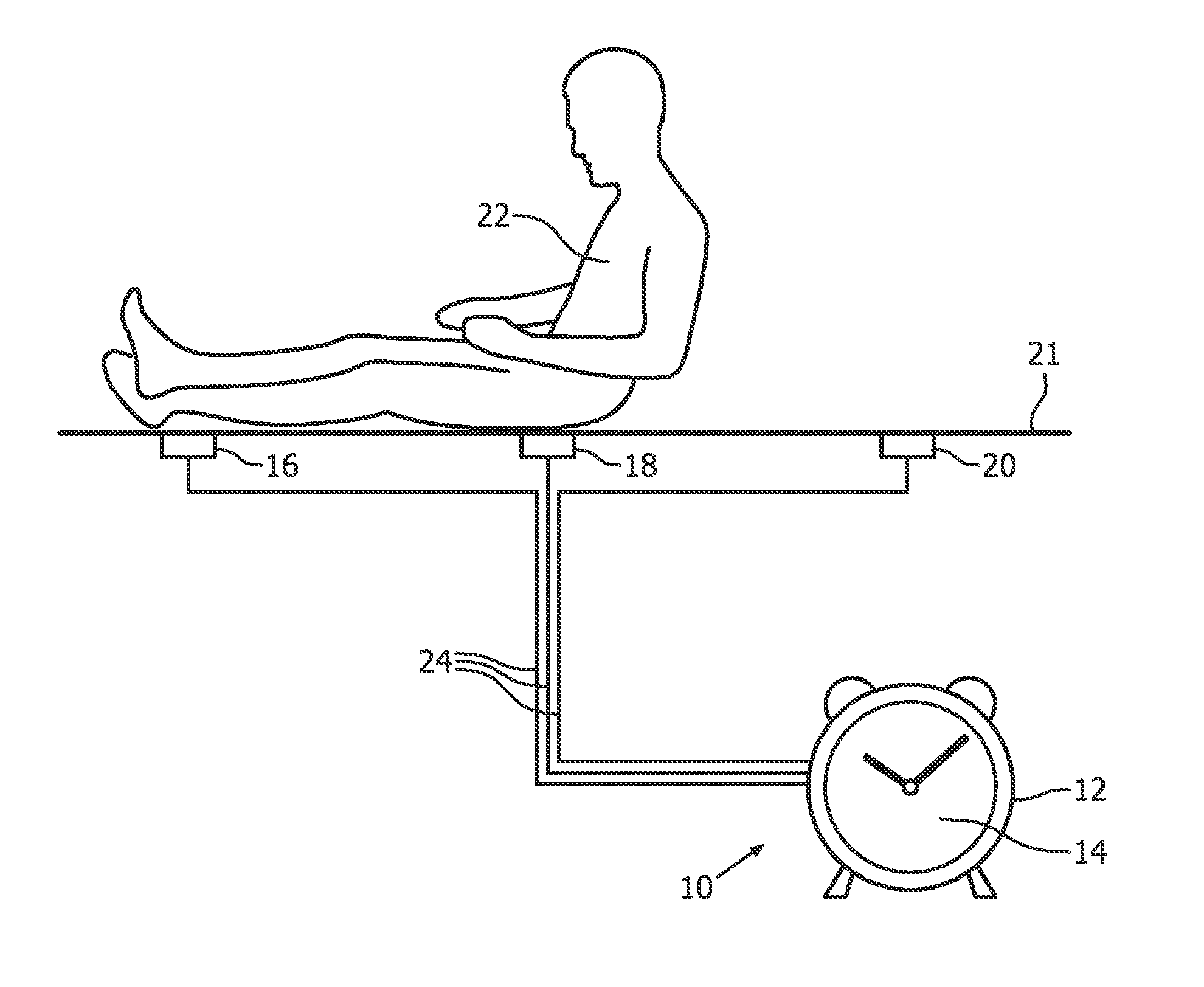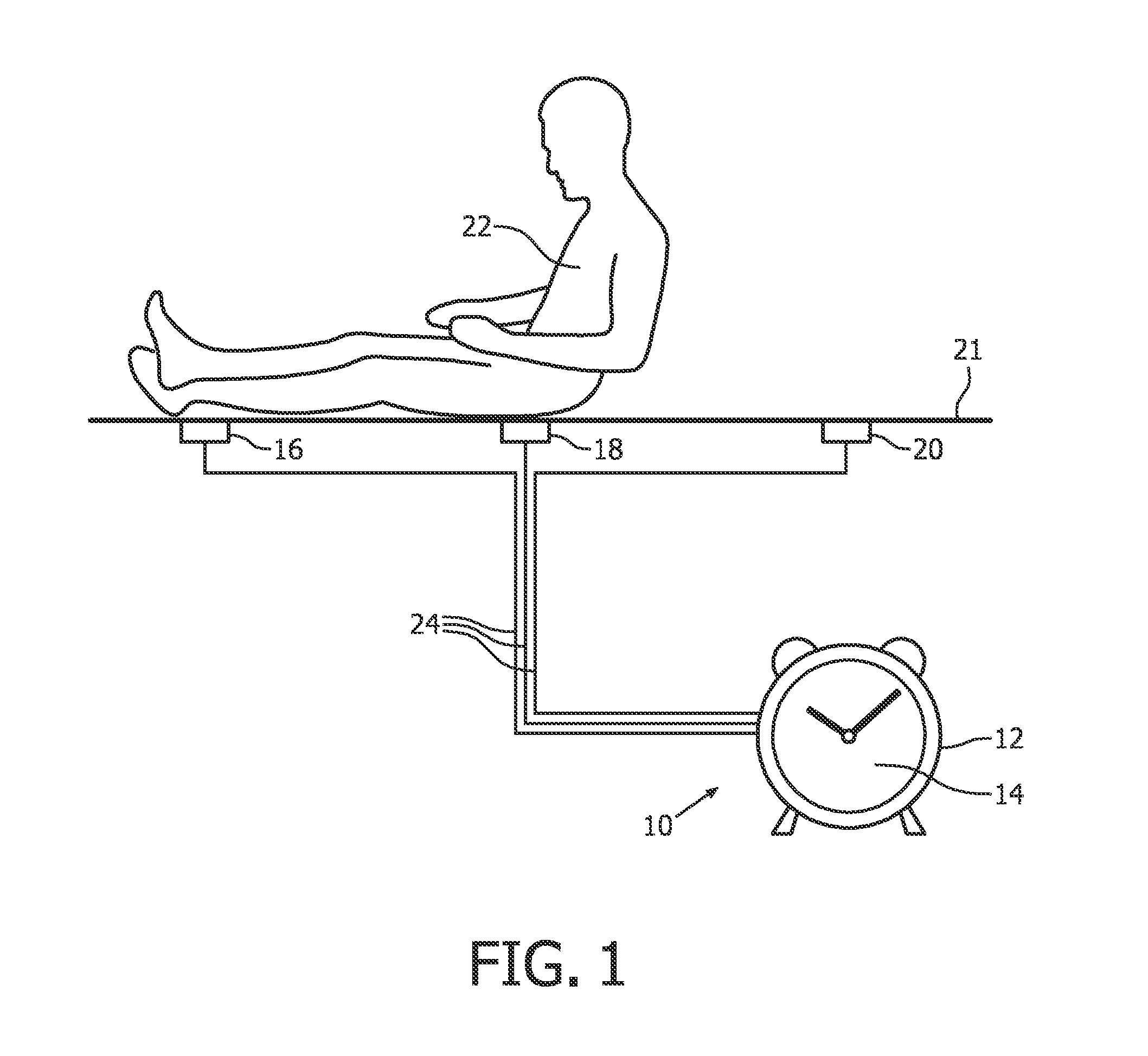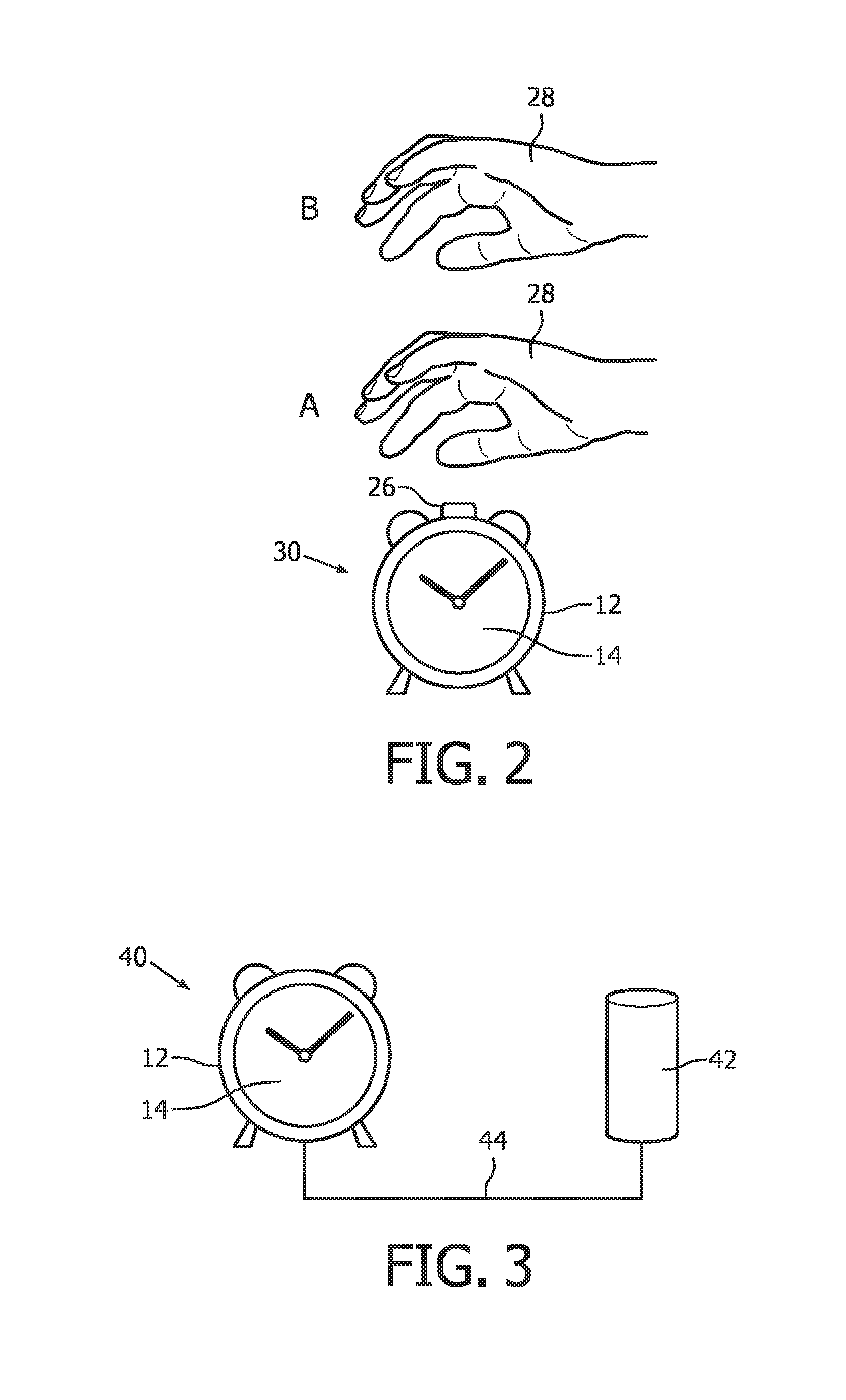Alarm clock and method for controlling a wake-up alarm
a technology of alarm clock and wake-up alarm, which is applied in the field of alarm clock, can solve the problems of increasing the body activity level not gradually but within a very short time span, and ensuring the heart function, so as to achieve smooth human waking, the physical effort required to suppress the signal also increases
- Summary
- Abstract
- Description
- Claims
- Application Information
AI Technical Summary
Benefits of technology
Problems solved by technology
Method used
Image
Examples
Embodiment Construction
[0033]The alarm clock 10 in FIG. 1 comprises a housing 12 and a time display 14 at the front side of the housing 12 to display the present time to the user. Inside the housing 12 an electronic circuitry is provided to control the time display 14 and all other functions of the alarm clock 10. On the surface of the housing 12 switching and setting means for the user can be provided to set the alarm clock 10, to switch the alarm on and off, etc.
[0034]The alarm clock 10 further comprises pressure sensors 16, 18, 20, integrated in the lying surface 21 of a bed on which the user 22 lies. Each pressure sensor 16, 18, 20 is connected to the circuitry within the housing 12 of the alarm clock 10 by a cable 24. The pressure sensors 16, 18, 20, are provided to measure a respective pressure value, which is transmitted to the circuitry inside the housing 12 via the cable 24.
[0035]The sensors 16, 18, 20, which are arranged at different positions within the lying surface 21, form an array to determ...
PUM
 Login to View More
Login to View More Abstract
Description
Claims
Application Information
 Login to View More
Login to View More - R&D
- Intellectual Property
- Life Sciences
- Materials
- Tech Scout
- Unparalleled Data Quality
- Higher Quality Content
- 60% Fewer Hallucinations
Browse by: Latest US Patents, China's latest patents, Technical Efficacy Thesaurus, Application Domain, Technology Topic, Popular Technical Reports.
© 2025 PatSnap. All rights reserved.Legal|Privacy policy|Modern Slavery Act Transparency Statement|Sitemap|About US| Contact US: help@patsnap.com



